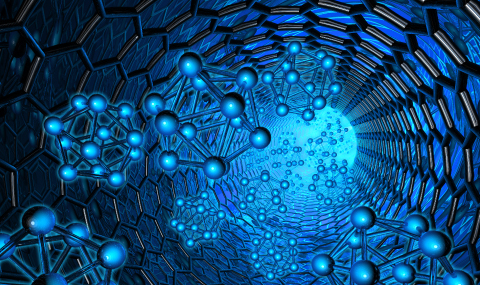Motivation: The promise of the “second quantum revolution” hinges on the success of quantum technologies1 such as quantum information processing and quantum sensing. Despite their tremendous progress, they are currently hindered by the inability to fully overcome the detrimental environment (bath) effectsthat lead to irreversible decoherence or dissipation of the quantum systems of interest. This hindrance reflects the ruling paradigm that quantum systems are controllable, but not the bath—which remains immutable.
We are exploring a radical departure from this paradigm, by venturing to control the bath so as to render the dynamics of the entire quantum system-bath complex (“supersystem”) nearly-reversible (quantum-coherent) and thereby minimize the hurdles of dissipation.
To this end, we intend to find the conditions under which one can render the bath state nearly pure by frequently acting on the quantum system it couples to. What should make this task feasible is that the many degrees of freedom (modes) of the bath need not be individually controlled to achieve reversal, only its global properties. Our broader goal is to seamlessly bridge the thermodynamic and quantum coherent descriptions by exploring the transition from reversibility to irreversibility as the supersystem complexity increases.
Our proposed paradigm change is inspired by the foundational issue: what is the nature of time directionality? Since the late 19th century, statistical physics and thermodynamics have crystallized the view that the “arrow of time” points towards entropy increase. A similar view was posited for quantum systems by von Neumann. Yet, in both classical and quantum mechanics, time evolution is reversible, i.e., past and future are interchangeable! A long-standing endeavor has been to reconcile these apparently contradictory views of time directionality: either by viewing quantum systems as open, irreversibly thermalized by the bath, or by attributing thermalization to non-equilibrium initial conditions within a closed supersystem. Accordingly, the time arrow in open quantum systems is asymptotically directed toward attaining states that are “fittest to survive” in the presence of the bath, typically thermal states.
None of the existing approaches can answer the key question: do dynamical control or observation at finite time intervals yield thermalization or reversible dynamics? Yet even if observation and control cause time-reversal, it must fail for sufficiently complex supersystems, otherwise a smashed cup could be restored by such means! So, what are the limitations of time reversal? When is it inapplicable and thermodynamics prevails?
Main idea: We attempt to elucidate these formidable questions by reformulating them as follows: What hinders the time-arrow reversal of quantum observables and how (if at all) can this hindrance be removed?
These questions are being addressed by us, theoretically and experimentally, for different levels of supersystem complexity:
- At the lowest level of complexity are supersystems composed of a multiqubit system coupled to a hot, generic (oscillator or spin) bath. The system observables are partly reversible under echo/ dynamical decoupling control only within the short memory time of the thermal bath, but not thereafter. Our remedy is to purify the bath state by frequently measuring a probe coupled to the bath until the bath reaches a low-entropy steady-state. Then the supersystem becomes quantum-coherent and the time arrow reversal of its observables persists long after the control by measurements is over.
- At a higher level of complexity are supersystems with nonlinearly coupled bath modes (modeled by nonlinearly coupled multimode interferometers). We have shown that time reversal and steering of thermodynamic observables is feasible upon dividing the bath into controllable blocks of few nonlinearly coupled modes.
- Yet the level of complexity beyond which this description is doomed to fail and the largely unknown mechanisms of such failure must be explored. We expect irreversible thermodynamic behavior in supersystems wherein the number of nonlinearly-coupled bath modes becomes large or in interacting spin networks as their connectivity/ topology becomes more involved..
Within its broad scope, our novel theory and its experimental tests are the first to systematically chart a road to time arrow reversal and the understanding of its limitations as the
Is time-arrow objective? “Objective” approaches whereby the environment/bath (B) “observes” a quantum system (S) have been motivated by the intent to banish the observer from quantum mechanics. However, the decomposition of a complex supersystem into system and bath is neither unique nor objective, but rather determined by the choices and resources of the controller-observer (CO). The view that the evolution of quantum systems is governed by the survival of the “fittest”, i.e., the most resilient states under the S-B interaction,may be invalid when S is subject to frequent monitoring and control (see our universal theory of decoherence control). The issue is whether decoherence is indeed an unavoidable fundamental mechanism that grants reality to the arrow of time and renders the world classical.
We, in contrast, stress the essential role of the CO in determining the time-reversibility of observables by choosing the measurement basis and the monitoring/ control protocols. This active role of the CO, which we dub Quantum Lamarckism, casts doubt on the alleged “objectivity” of the time-arrow and corroborates the observer-centered approach of some of the founders of quantum mechanics.
In our experimental collaborations, we resort to platforms that have been scarcely employed in thermodynamic applications: optically controlled NV centers in diamond and optically induced Rydberg polaritons in ultracold (rubidium) atoms. These platforms allow precise controllability of time reversal at the level of few quanta.
Our selected publications on these issues
T. Opatrny et al. Nonlinear coherent heat machines, Science Advances 9, 1070 (2023)
DBR Dasari et al. `Anti-Zeno purification of spin baths by quantum probe measurements, Nature Communications 13, 7527 (2022)
AG Kofman and G.Kurizki, Does Decoherence Select the Pointer Basis of a Quantum Meter? Entropy 24, 106 (2022)
G. Kurizki and AG Kofman, Quantum Lamarckism: Observation, Control and Decoherence, Physica Scripta 93, 124003 (2018).

